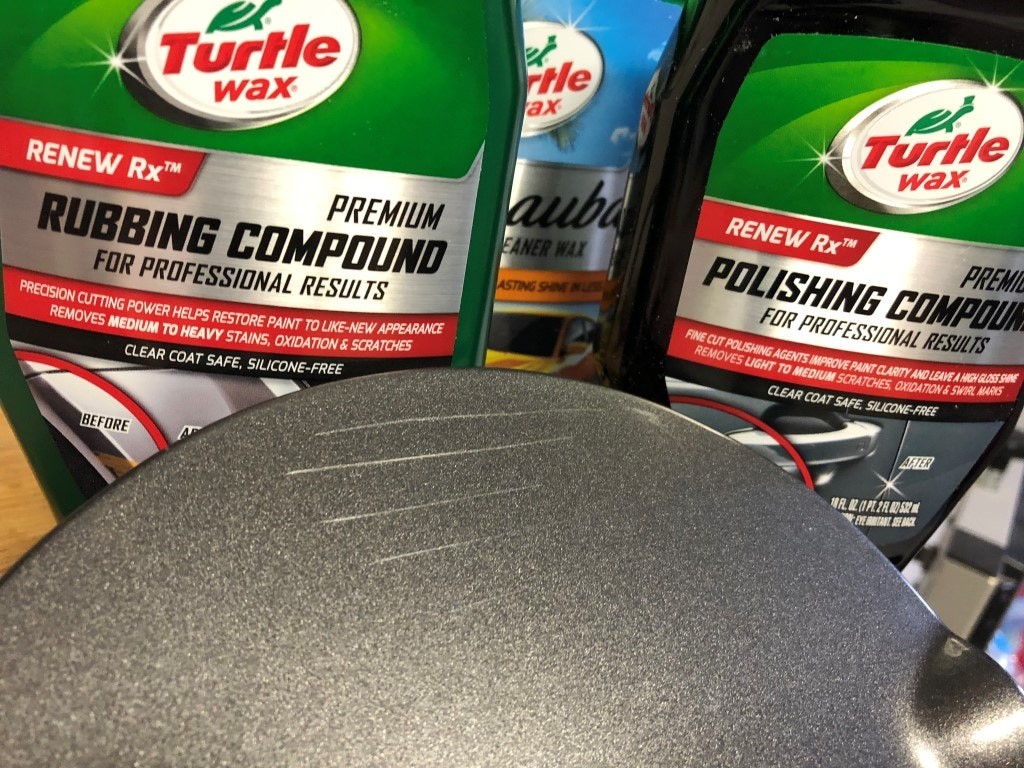Minor scratches on your car are almost inevitable. Whether it’s from a rogue shopping cart, a stray tree branch, or just everyday wear and tear, these blemishes can detract from your car’s appearance. The good news is that you don’t always need to rush to a professional body shop for these small imperfections. Many minor scratches can be effectively repaired at home with the right techniques and products. This guide will walk you through how to assess and repair minor car scratches yourself, saving you time and money.
Understanding Minor Car Scratches
Before you grab any repair products, it’s crucial to determine the type of scratch you’re dealing with. Minor scratches, often called clear coat scratches, are superficial marks that only affect the clear top layer of your car’s paint. You can usually identify a minor scratch if you can’t feel it deeply with your fingernail. If your fingernail catches in the scratch, it’s likely deeper and might require more extensive repair or professional attention.
For deeper scratches that penetrate the clear coat and reach the color coat or even the primer, simple DIY methods might not be sufficient. This guide focuses specifically on repairing those minor, surface-level scratches that are common and manageable at home.
DIY Methods for Minor Scratch Repair
Several effective DIY methods and readily available products can help you tackle minor scratches. Here’s a step-by-step approach:
1. Cleaning the Scratch Area
The first and most crucial step is to thoroughly clean the scratched area. Dirt and debris can hinder the repair process and even worsen the scratch if you rub them into the paint.
- Wash the area: Use car wash soap and water to gently clean the area around the scratch. Rinse thoroughly and dry with a clean microfiber towel.
- Remove wax and grease: For a truly clean surface, use a wax and grease remover. This ensures that your repair products will adhere properly to the paint surface.
2. Using a Polishing Compound
For very light surface scratches, a polishing compound might be all you need. Polishing compounds are mildly abrasive and work by gently leveling the clear coat around the scratch, making it less visible.
- Apply polishing compound: Apply a small amount of polishing compound to a soft foam applicator pad or a microfiber cloth.
- Rub gently: Using circular motions, gently rub the compound into the scratch. Apply light to medium pressure.
- Buff off residue: After working the compound for a minute or two, use a clean, dry microfiber cloth to buff away the residue.
- Inspect the results: Check if the scratch has become less visible or disappeared. You may need to repeat the process for slightly deeper minor scratches.
Image: Results after using Turtle Wax products on car scratches. Note the minimal improvement on even minor scratches.
Product Recommendations:
- Turtle Wax Rubbing Compound and Polishing Compound: These are readily available and affordable options for tackling very light scratches. As tested, they might offer slight improvement for the lightest scratches, but effectiveness on even minor scratches can be limited.
- Meguiar’s Ultimate Compound: Considered a step up from basic compounds, Meguiar’s Ultimate Compound offers a bit more cutting power to address slightly more noticeable minor scratches.
3. Utilizing a Scratch Remover Kit with Power Tools
For minor scratches that are a bit more stubborn and don’t fully disappear with polishing compound alone, a scratch remover kit that incorporates a power tool can be very effective. These kits often include a more potent compound and a drill-attached polishing system to enhance the repair process.
- Apply rubbing compound: Kits like the Meguiar’s DA Power System or 3M Trizact Precision Scratch Kit come with specialized rubbing compounds. Apply a small amount to the provided foam pad.
- Use a drill with polishing attachment: Attach the foam pad to your drill according to the kit’s instructions.
- Polish the scratch: Using the power tool, gently polish the scratched area. The orbital motion of these systems helps to evenly work the compound and refine the clear coat.
- Follow with polishing step (if included): Some kits, like the 3M Trizact system, include a polishing step after the rubbing compound. This further refines the finish and enhances shine.
- Buff clean: Finally, buff away any remaining residue with a clean microfiber cloth.
Image: Improved scratch repair results after using Meguiar’s DA Power System. Light scratches are significantly reduced.
Product Recommendations:
- Meguiar’s DA Power System: This system attaches to a standard drill and provides effective polishing action, significantly improving the appearance of minor scratches. It’s a good option for those looking for a balance between manual effort and power tool assistance.
- 3M Trizact Precision Scratch Kit: This comprehensive kit includes sandpaper for light sanding, along with rubbing and polishing compounds. It’s designed for more noticeable minor to moderate scratches and can produce excellent results, even on scratches that require a bit more abrasion to remove. The inclusion of sandpaper means you are lightly sanding the clear coat, which can be intimidating but is sometimes necessary for better results on slightly deeper minor scratches.
Image: 3M Trizact system results showing improvement on deeper scratches. While improved, deeper scratches may still be somewhat visible even after using more aggressive methods.
When to Consider Professional Help
While DIY methods are great for minor scratches, there are times when seeking professional help is the best course of action.
- Deep scratches: If your fingernail catches deeply in the scratch, or if the scratch is down to the primer or bare metal, professional repair is recommended.
- Large or numerous scratches: Extensive scratch damage might be too time-consuming or complex to repair effectively at home.
- If you are unsure: If you are hesitant or uncomfortable performing DIY repairs, it’s always best to consult with a professional auto detailer or body shop.
Conclusion
Repairing minor scratches on your car at home is achievable with the right approach and products. By understanding the type of scratch, cleaning the area properly, and using appropriate polishing compounds or scratch repair kits, you can significantly improve your car’s appearance and protect its paint. Remember to start with the least abrasive method and progressively move to more robust solutions if needed. For deeper or more extensive damage, don’t hesitate to seek professional assistance to ensure the best possible outcome for your car’s finish.


